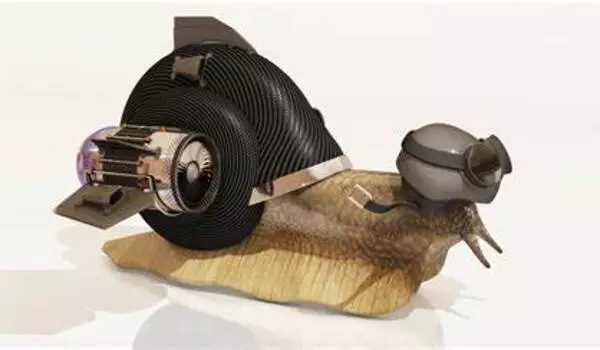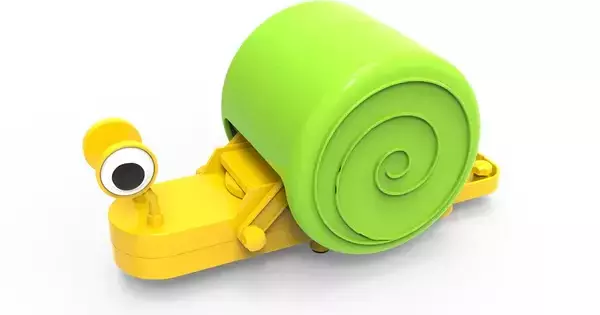Snails are known for their slow and steady movement, and scientists and engineers frequently look to nature for inspiration when developing efficient and sustainable technologies. Robotics for environmental purposes, such as cleaning up ocean microplastics, are currently being researched and developed.
Scientists have created a robot prototype inspired by a small and slow snail that could one day scoop up microplastics from the surfaces of oceans, seas, and lakes. The Hawaiian apple snail (Pomacea canaliculate), a common aquarium snail that uses the undulating motion of its foot to drive water surface flow and suck in floating food particles, inspired the robot’s design.
Currently, plastic collection devices rely on drag nets or conveyor belts to gather and remove larger plastic debris from water, but they lack the fine scale required for retrieving microplastics. These tiny plastic particles can be consumed and end up in the tissues of marine animals, entering the food chain and posing a health risk to humans.
We were inspired by how this snail collects food particles at the [water and air] interface to engineer a device that could possibly collect microplastics in the ocean or at a water body’s surface.
Dr. Sunghwan
“We were inspired by how this snail collects food particles at the [water and air] interface to engineer a device that could possibly collect microplastics in the ocean or at a water body’s surface,” said Sunghwan “Sunny” Jung, professor in the department of biological and environmental engineering at Cornell University. Jung is senior author of a study, “Optimal free-surface pumping by an undulating carpet,” which was published in Nature Communications.
The prototype, modified from an existing design, would need to be scaled up to be practical in a real-world setting. The researchers used a 3D printer to make a flexible carpet-like sheet capable of undulating. A helical structure on the underside of the sheet rotates like a corkscrew to cause the carpet to undulate and create a traveling wave on the water.

This study relied heavily on fluid motion analysis. “We needed to understand the fluid flow to characterize the pumping behavior,” he said. The fluid-pumping system based on the snail’s technique is exposed to the elements. The researchers calculated that a similar closed system, in which the pump is enclosed and sucks in water and particles through a tube, would require high energy inputs to operate. The snail-like open system, on the other hand, is far more efficient. The prototype, for example, runs on only 5 volts of electricity while effectively sucking in water, according to Jung.
Due to the weight of a battery and motor, the researchers may need to attach a floatation device to the robot to keep it from sinking, Jung said.















